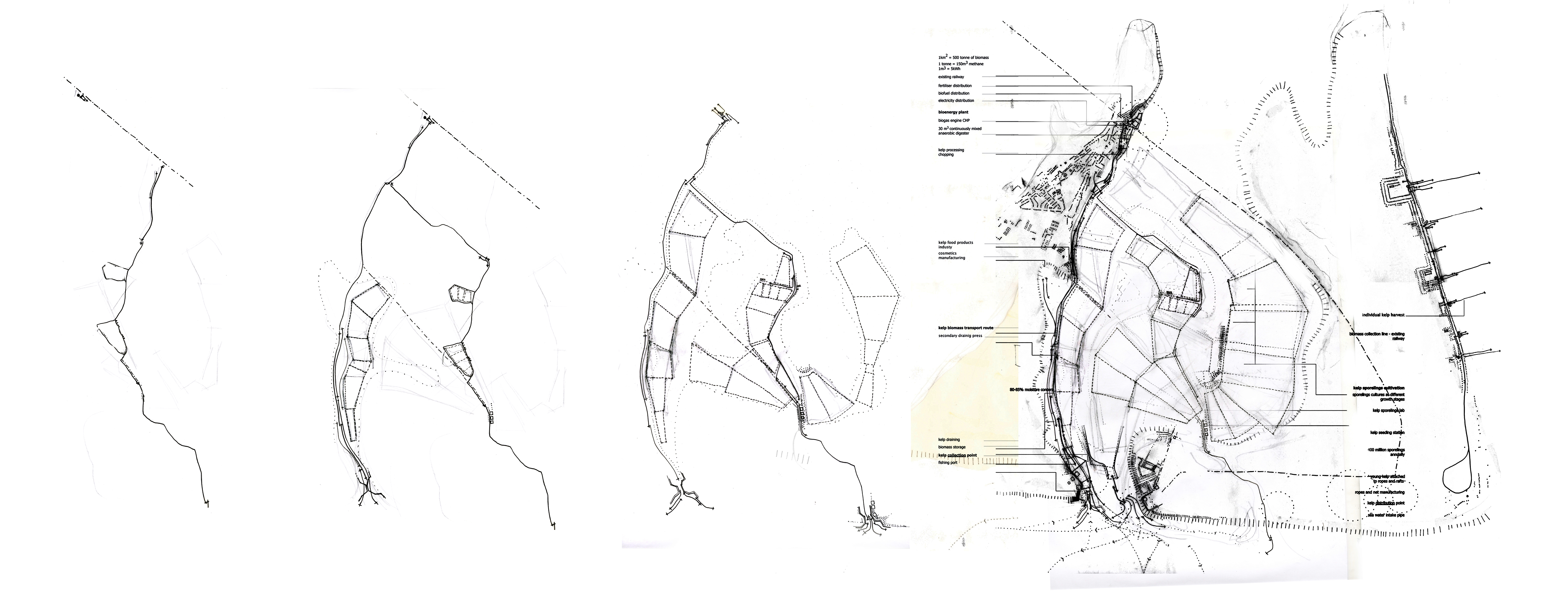Urban Ecosystem
- Phased Development Strategy for Lydd
The project explores a town-scale energy self-sufficiency concept where the adaptable infrastructure helps with the preparation for the future scenario of the shoreline recession. Located at the floodplains of Dungeness (UK), the small town of Lydd was taken as a case study for a comprehensive development strategy. The proposal incorporates an investigation into the managed retreat, sea farming and the biomass production.
In the envisaged strategy, the coastal areas of the UK will be employing a clean energy program based on sea farming. In combination with the wave power generation, seaweed farms and the biomass combustion will supply renewable energy to the coastal areas of Britain, complying with the set UK sustainability goals. The project located in Dungeness is to serve as a pilot scheme for a larger system running from test stages to full operation mode in 2060.
The introduction of aquaculture in the area is to address a complex set of existing local environmental and socio-economic problems. The nearby nuclear power plant closure set for 2030 not only marks a significant shift from non-renewable power supply but also leads to a substantial job loss – the introduction of the new industry will act as a response to this problem. To tackle the recurring flooding damages, seaweed will be used as a natural erosion barrier facilitating the managed retreat. Similarly to mangroves, seaweed can act as an effective natural barrier and reduce the force of the storm surge and bring down the rate of erosion.
Project phasing
The project is proposed to be phased over 50 years until it reaches the full operation stage and secures energy self-sufficiency for the town. The rising sea levels will be a crucial factor in the timing of the particular phases. From an experiment, over time, a scheme develops into a commercial project. During this time, gradually a larger part of the community is involved in the process, and more infrastructure is introduced into the area. Other initiatives are predicted to emerge alongside the seaweed cultivation (fishing, oyster farming, cosmetics and food businesses). The infrastructure for the full operation scale will be developing gradually, and different elements from the currently existing infrastructure will be used at first.



 ︎︎︎Infrastructure and a hypothetical field analysis
︎︎︎Infrastructure and a hypothetical field analysisWith prescribed parameters and performance patterns, an infrastructural pattern was analysed in the form of a field. This energy flow and growth extend interdependency was drawn using data connected to biomass productivity, where 1 km² of seaweed supplies energy to 115 households.


all drawings by Kaja Deleżuch
copyright © 2010-2025 Kaja Deleżuch
all rights reserved